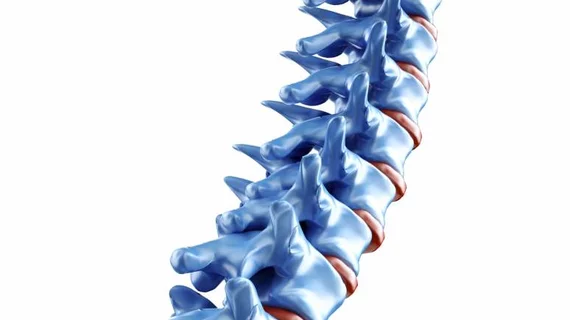People with long-term spinal cord injuries could have a chance of regaining some functions thanks to a 3D-printed guide created by a team at the University of Minnesota.
A team of engineers and medical researchers has created a guide that would serve as a platform for specialized cells that are 3D printed on top of it, according to a press release. The team’s research was published in the Advanced Functional Materials journal.
The guide, made of silicone, would be surgically implanted into the injured area of the spinal cord and serve as a bridge between living nerve cells above and below the injured area. The goal for the device is to alleviate pain and help patients regain some functions like control of muscles, bowel and bladder.
“This is the first time anyone has been able to directly 3D print neuronal stem cells derived from adult human cells on a 3D-printed guide and have the cells differentiate into active nerve cells in the lab,” Michael McAlpine, PhD, co-author of the study, said in the release.
The team’s process allows researchers to start with any kind of cell from an adult. With new bioengineering techniques, researchers are able to reprogram the cells into neuronal stem cells. Engineers then print the cells onto a silicone guide using 3D-printing technology. The technology is used to print both the guide and the cells.
"The guide keeps the cells alive and allows them to change into neurons. The team developed a prototype guide that would be surgically implanted into the damaged part of the spinal cord and help connect living cells on each side of the injury," the release said.
McAlpine also described the 3D printing of “delicate” cells as very difficult. However, the team’s continued research could improve the lives of people who suffer from spinal cord injuries.
"The hard part is keeping the cells happy and alive. We tested several different recipes in the printing process. The fact that we were able to keep about 75 percent of the cells alive during the 3D-printing process and then have them turn into healthy neurons is pretty amazing,” he said in the release.
"We've found that relaying any signals across the injury could improve functions for the patients," Ann Parr, MD, PhD, co-author of the study, said in the release. "There's a perception that people with spinal cord injuries will only be happy if they can walk again. In reality, most want simple things like bladder control or to be able to stop uncontrollable movements of their legs. These simple improvements in function could greatly improve their lives."

